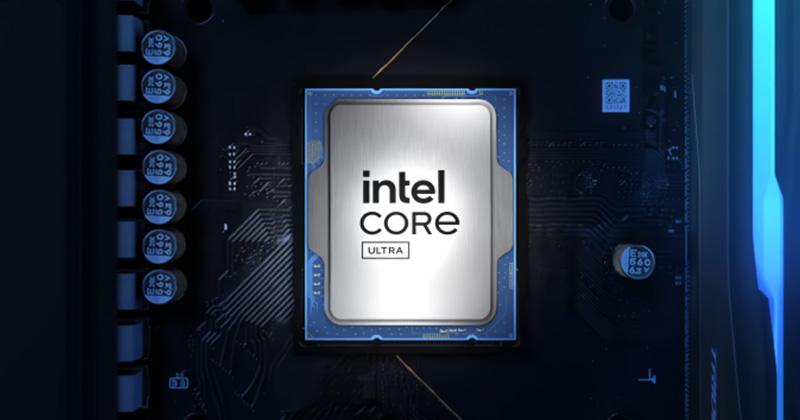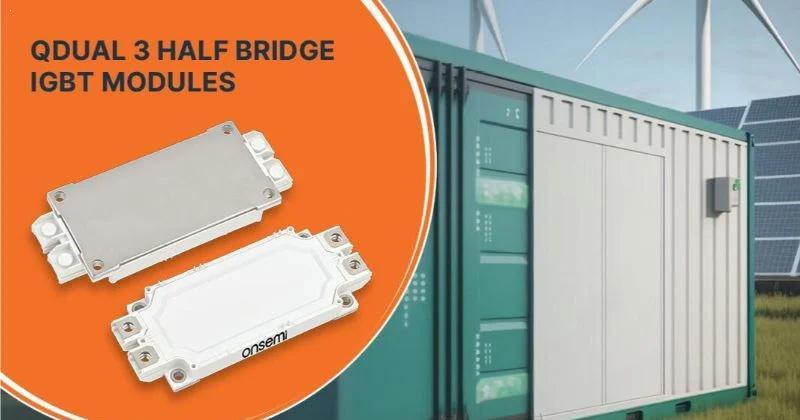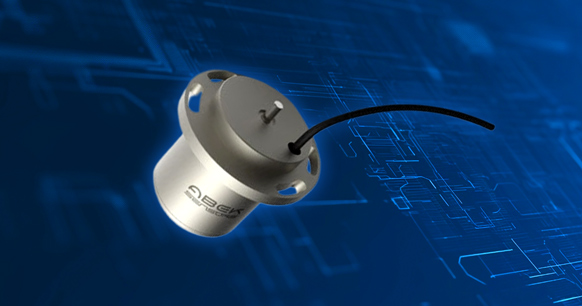
Unveiled today at Embedded World, AMD Shakes Up Chip Architecture In New Server-Grade Embedded Processors
Today at Embedded World 2025, AMD announced its latest 5th Gen EPYC embedded processors, the AMD EPYC Embedded 9005 Series (also called "Embedded Turin"). These processors leverage AMD's advanced "Zen 5" and "Zen 5c" architectures to confront rising demands driven by artificial intelligence workloads and substantial data storage growth.
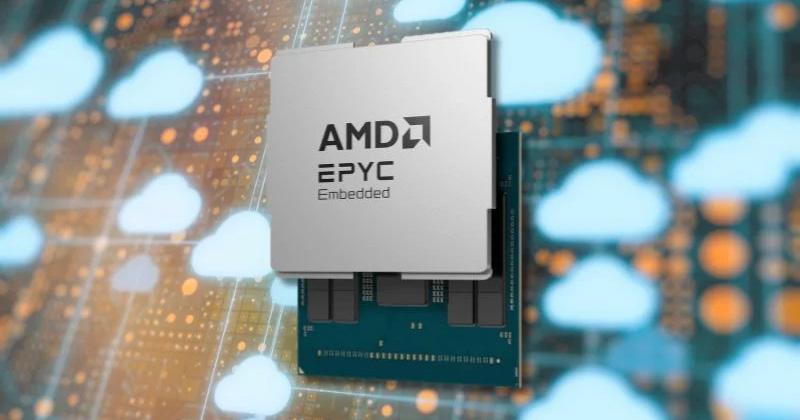
AMD’s new EPYC Embedded 9005 Series.
AMD is sampling the EPYC Embedded 9005 Series processors to select customers, with general production expected by Q2 of 2025. Notably, the processors use AMD's existing SP5 socket form factor, ensuring straightforward compatibility with previous-generation systems, minimizing customer redesign efforts, and reducing transition costs.
All About Circuits spoke with Tarang Shah, AMD's senior product marketing manager for embedded CPUs, to learn about the new processors firsthand.
Architectural Enhancements and Performance Scaling
AMD has introduced a novel architecture in the new embedded processors (data brief linked).
“For embedded x86 applications, we’re not the incumbent, so we’re competing heavily,” Shah said. “That’s why it’s critical that we bring a platform that is not just high-performance but also mature, architecturally stable, and reliable with extended product availability.”
To this end, one of the primary improvements in this new processor is its use of TSMC’s 3-nm and 4-nm process nodes to enhance power efficiency and transistor density over the previous 5-nm, Genoa-based architecture. With greater density, the series scales from 8 to 192 cores across 17 different SKUs.
Each processor integrates Zen 5 and Zen 5c cores. Zen 5 delivers higher single-threaded performance, while Zen 5c focuses on maximizing core density within a given power envelope. With an increased L3 cache of up to 512 MB, DDR5-6400 memory support, and a memory bandwidth of 614 GB/s, the platform is said to significantly improve throughput for storage controllers, industrial automation, and AI-driven networking workloads.

EPYC Embedded product line history.
AMD has optimized the Embedded Turin processors for PCIe Gen 5 connectivity, with up to 128 PCIe lanes in a single-socket configuration and 160 lanes in dual-socket setups. Such architectural features unlock high-speed interconnectivity for NVMe-based storage and accelerated AI inference processing at the edge. Additionally, the integration of CXL 2.0 enables memory pooling across devices for better scalability in storage and networking infrastructure.
Embedded-Specific Features
Unlike AMD’s EPYC processors for data centers, the Embedded 9005 Series incorporates features specifically tailored for embedded applications. These enhancements largely focus on platform longevity, system resiliency, and secure boot mechanisms.
“Embedded Turin is a data center-class product that we’re optimizing for embedded applications,” Shah said. “It brings the same level of compute capabilities, performance, and energy efficiency as AMD’s data center-class product, commercial Turin.”
For longevity, AMD guarantees a seven-year product availability window that extends lifecycle stability for OEMs who require long-term deployments. The silicon is also characterized for extended operating temperatures, functioning reliably between -5°C and 60°C.
For data integrity and fault tolerance, the processors include non-transparent bridging (NTB), DRAM flush, and dual SPI support. NTB enables active-active failover in multi-host storage systems for continuous operation during hardware failures. DRAM flush safeguards volatile memory by transferring critical data to non-volatile storage upon power loss. Dual SPI allows platform authentication before execution for higher firmware security and trusted execution environments.
To streamline software integration, AMD provides Yocto Project support, which allows developers to create custom Linux distributions optimized for embedded applications. Additionally, DPDK and SPDK frameworks accelerate packet processing and high-speed storage operations.
Competitive Benchmarking
AMD positions Embedded Turin as a superior alternative to Intel’s 6th Gen Xeon 6980P, claiming significant advantages in core density, per-core performance, and power efficiency.
At the socket level, AMD’s 192-core EPYC 9965 is said to deliver 30% higher throughput than Intel’s 128-core Xeon 6980P, making it a better fit for multi-threaded networking workloads such as firewall processing and deep packet inspection.
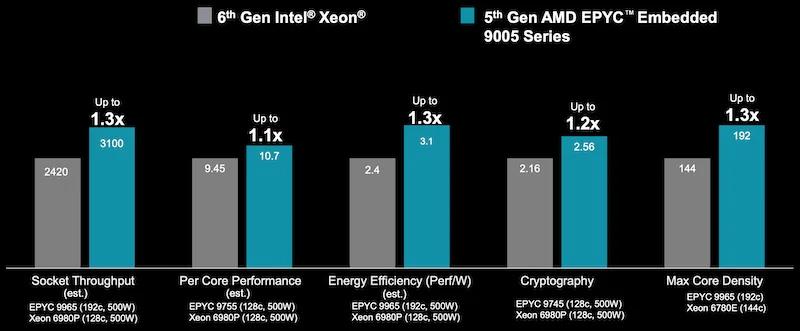
Benchmarking EPYC Embedded 9005 versus the 6th Gen Intel Xeon.
At the core level, AMD reports a 10% uplift in per-core performance over the Xeon 6980P, benefiting latency-sensitive storage and AI-driven industrial automation applications. Additionally, AMD achieves 30% better energy efficiency.
For encryption workloads, AMD claims a 20% higher cryptographic throughput, enabling encryption and decryption without dedicated external accelerators. Finally, AMD claims the processors outperform Intel in PCIe connectivity with 160 PCIe Gen 5 lanes compared to Intel’s 96 lanes.
Market Impact and Availability
AMD’s EPYC Embedded 9005 Series is already sampling with early access customers and production shipments scheduled for Q2 2025. OEMs such as Cisco and IBM have announced the adoption of the new processors in high-end firewalls and AI storage platforms.
“Going forward, you will see more product launches from AMD specifically targeting x86 embedded applications,” Shah said. “We are investing heavily in this space to ensure long-term leadership.”


